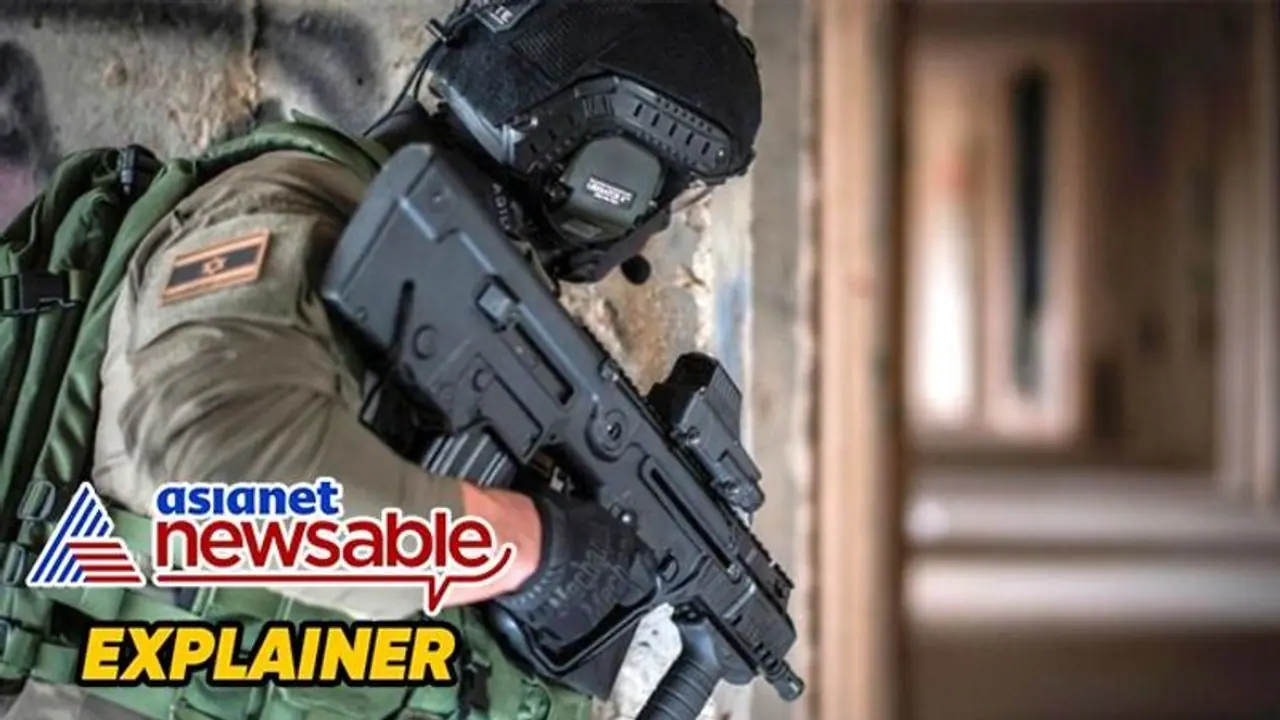Even though Israel is currently hammering the south with airstrikes and losses are growing, international criticism will make it difficult for the IDF to replicate the northern tactics in the long run, and the campaign will most likely rely on raids and more targeted operations, says Girish Linganna
On October 15, United States President Joe Biden told CBS Television Channel that he believed that the Palestinian Hamas movement must be 'completely destroyed'. Israeli President Isaac Herzog wrote the same in The New York Times. Herzog stated that, ever since Hamas’s military incursion into Israel commenced, the Israeli Defense Forces (IDF) had made every effort to eradicate this menace. Prime Minister Benjamin Netanyahu reiterates this goal every day. Israel’s ongoing actions have the potential to protract the conflict for decades, so France expects the country to provide more specific objectives for its military operation in the Gaza Strip beyond 'destroying Hamas'.

At a press conference that followed the 28th Conference of the Parties to the United Nations Framework Convention on Climate Change in Dubai, French President Emmanuel Macron pondered the nature of 'total destruction of Hamas' and the extent to which anyone believed it was feasible. Macron expects the conflict to last 10 years if this is the end goal. Ironically, Macron is among the leaders who would take 'as long as it takes' to defeat Putin and Russia.
France's Macron is hardly the only person who indulges in doublespeak. Turkey President Recep Tayyip Erdogan urged Israel to give up on its plan to destroy Hamas since its execution is not a feasible scenario. According to Erdogan, if two sovereign entities are established and live in harmony, 'the problems of Gaza and mutual threats will disappear by themselves'. An autonomous Kurdistan is just waiting to be established.
Civilian Losses to Impede South Ops
On the ground, according to Israeli security officials, at least 5,000 Hamas members have been killed. The fact that a large number of militants are thought to have died underground in the tunnels complicates the count. Officials from Hamas refused to comment and did not provide their wartime death toll.
As Israel tries to maintain US assistance, pressure from abroad to reduce civilian losses is likely to affect how quickly operations are conducted in the south, which are far from over.
According to Gaza’s health ministry, the cost has already been catastrophic, with roughly 16,000 Palestinians killed -- including over 5,000 children. However, the operations of the IDF and airstrikes have not undermined the structure of Hamas’s military wing.
While airstrikes have destroyed much of Gaza City, Israel’s ground forces have not yet reached some of Hamas’s main strongholds. Michael Milshtein, former chief of Israel’s military intelligence agency’s Palestinian sector, told The Washington Post that around a third of Gaza City remains uncontrolled by Israeli forces, including parts believed to be well fortified.
Israel Wary of Hamas Strongholds
The group’s persistent presence in what used to be the major city in the enclave was indicated by the appearance of dozens of armed fighters with masked faces in a main square during the recent lull in fighting to hand over prisoners. Known Hamas military strongholds -- such as Shejaiya -- where some of the fiercest fighting of Operation Cast Lead occurred in 2014 and where Hamas is probably well-entrenched to fight have, so far, been avoided by the Israeli army.
Regarding a potential battle in the region, Milshtein remarked that it would be very challenging, adding that Hamas had truly prepared all its infrastructure. Planet Labs’s satellite pictures from November 30, just before the violence temporarily stopped, revealed minimal evidence of an Israeli military presence in the surrounding areas of Shejaiya and Jabalya, two further conurbations to the east. But since the conflict resumed late last week, the districts have been the target of intense shelling and attacks.
Lower-Level Counterinsurgency Ops
Even though Israel is currently hammering the south with airstrikes and losses are growing, international criticism will make it difficult for the IDF to replicate the northern tactics in the long run, and the campaign will most likely rely on raids and more targeted operations.
According to Milshtein, there will probably be a lower-level counterinsurgency effort in the coming months. According to an Israeli security official who corroborated this assessment, the operations will differ significantly from those in Gaza City because it is much more overcrowded.
Israeli Defence Minister Joa Gallant is unequivocal about his intentions towards Hamas. The first thing Hamas will have to do is deal with Israeli air raids. They will have to contend with tank shells, artillery and the operations of Israeli armoured bulldozers before settling for infantry bullets. Israel would conduct combat operations throughout the Gaza Strip, he said.
It is estimated that Hamas has between 27,000 and 40,000 fighters and that recruiting is not difficult for them. However, Israel places more importance on ‘decapitating’ the Hamas leadership than eliminating the total number of soldiers, especially Yahya Sinwar, the commander of Hamas in Gaza, whom the Israeli army has called a “walking dead”. As the ones with the power to rule the Strip, they are their symbols, according to Eyal Hulata, who led Israel’s National Security Council until earlier this year.
The author of this article is a Defence, Aerospace & Political Analyst based in Bengaluru.
